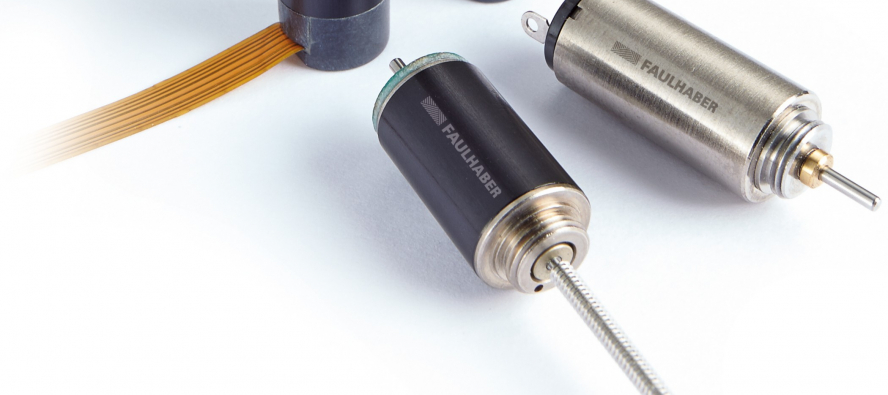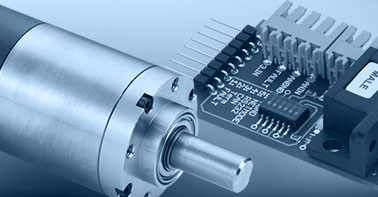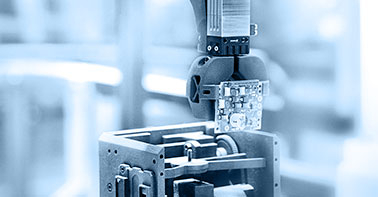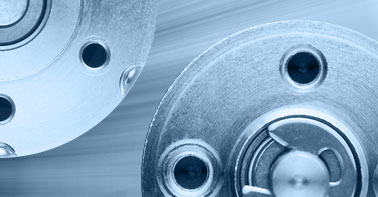- info@ems-ltd.com
- 0118 9817391
Home > PR > The power of touch
The power of touch
23/06/2025 - How micromotors are driving haptic feedback in MedTech
23rd June 2025
Filed under:
Faulhaber, Medtech, Brushless Dc Motor

At the British Science Festival in September 2024, University College London (UCL) unveiled its latest breakthrough in touch technology — a fingertip device capable of delivering realistic sensations to simulate touch more naturally. But what about the technology making this possible, and what does it mean for the future of healthcare?
Haptics refers to the use of touch and vibrations to create an artificial sense of interaction, providing users with a more immersive and greater sensory experience. Haptic feedback is widely recognised in the use of video game controls to intensify realism during gameplay, and in smartphone touchscreens to offer customisable cues for better usability.
Elsewhere, and perhaps more importantly, haptic technology is being increasingly used in healthcare to improve surgical precision, create realistic simulation environments and assist rehabilitation.
Haptics in healthcare
Touch is one of the most essential diagnostic and therapeutic tools a healthcare provider can rely on. From a nurse adjusting pressure when dressing a wound, to a surgeon determining where the boundaries of a tumour might exist inside the body, touch provides critical sensory input that cannot be replicated by sight alone.
As healthcare technologies such as robotic surgery, remote diagnostics and wearables evolve, the challenge lies in maintaining the sense of touch where physical contact is reduced or impossible.
By simulating the sensation of touch through precisely controlled forces, vibrations and motions, haptic systems bring a sense of physical interaction back to digital experiences. In robotic-assisted surgery, for instance, haptic feedback can replicate the resistance felt when suturing tissue. In training and simulation workshops, it allows students to develop muscle memory and greater understanding of anatomy before they ever examine a human patient.
In one of the most recent developments, UCL launched a soft fingertip device that can “simulate touch as natural as real-life sensations”. Specifically, the device features a silicone fingertip that is connected to a machine and stimulates four key sensory nerve cells or touch receptors in the skin — creating a realistic sense of touch.
Researchers involved in the project expressed that the device could be used as a diagnostic tool for people with metacarpal tunnel syndrome, which occurs when a wrist nerve is compressed, or diabetes, where loss of touch sensation is a symptom. Currently, it’s being used by scientists to understand how people with poor sensitivity in their fingertips lose their sense of touch over time. In the future, scientists believe the device could enable people living thousands of miles away from each other to hold hands.
The hidden engine behind haptics
While future applications of haptic technology continue to evolve, the reality is that haptic feedback would not at all be possible without micromotors.
Recreating the complexity of human touch in a mechanical system is not simple. Haptic feedback must deliver highly nuanced sensations — such as pressure, vibration and resistance in real time, and often within space-constrained or mobile environments. This creates several demanding engineering challenges, from miniaturisation and precision to responsiveness and low noise.
Responsiveness and precision are at the heart of effective haptic systems, particularly in surgical robotics, where even a millisecond delay can compromise the realism of the interaction and be detrimental to safety. In robot-assisted surgery, micromotors are embedded within instrument handles or robotic end-effectors to recreate the resistance and feedback a surgeon would normally feel. These motors must respond instantly to variations in pressure, motion and tissue density — replicating sensations such as the tension of suturing or the distinction between healthy and abnormal tissue.
High-performance brushless DC micromotors, such as those supplied by EMS, are engineered for these demands, offering fast acceleration, low inertia, smooth motion control and minimal vibration. With no brushes to wear out, these motors offer longer service life and are well-suited to the continuous operation required for surgical procedures.
Outside of a theatre setting, haptic technology is also being used to improve the lives of amputees. In recent years, researchers have found that robotic prosthetics with the ability to provide an artificial sense of touch significantly decreases the mental effort that’s required to operate the prosthetic.
Here, micromotors are responsible for restoring sensory perception and improving the user’s interaction with their surroundings. Advanced prosthetics rely on haptic feedback to simulate sensations like grip strength, texture and pressure, but the challenge lies in creating highly responsive and realistic feedback, without adding weight. The brushless DC servo motors with 2 Pole Technology from FAULHABER’s B series start from just 6mm in diameter and are purpose built for use in highly demanding applications, such as medical device technology. These ironless, slotless motors are precise, enable smooth positioning control, have extended service lifetimes and are extremely reliable.
Micromotors are driving the next generation of human-centred healthcare. As haptic feedback redefines how touch is experienced in medical technology, the precision, speed and reliability of micromotors make them essential to delivering lifelike, responsive interactions that improve the efficiency and accuracy of surgeons, and the lives of patients. In bridging the gap between physical and digital sensation, micromotors are not just enabling progress — they’re redefining the future of medical care.
EMS is a UK supplier of DC micromotors, based in Poole, Dorset. View our full range of brushless motors here.
- Categories / Tags
- 1024...SR
- AEMT
- AESL
- Acceleration
- Agriculture
- Agritech
- Autoclave
- BHS
- BHT
- BHx
- BLDC
- BMotion
- BP4
- BRC Series
- BX4
- BXT
- BeBionic
- Bearings
- Bespoke
- Brushed
- Brushed DC Motors
- Brushless
- Brushless DC Motor
- Brushless DC Motors
- Brushless Dc Motors
- Brushless Motor
- Buhler
- Building Automation
- Bühler
- COVID
- CXR
- Catalogue
- Company Update
- Controller
- Coreless
- Coventry
- Custom
- Custom Design
- Custom Drive Design
- DC Motor
- DC Motor Supplier
- DMN
- Dc Motor
- Design
- Dimatech
- Drive System
- Drones
- EDS
- EMS
- EMS News
- EMS40
- EV
- Encoder
- Ewellix
- Exoskeleton
- Expo
- FAULHABER
- Factory
- Faulhaber
- Flat
- GPT
- Galil
- Gearhead
- IEF3
- IMC
- Industry 4.0
- Industry 4.0. Blog
- Inspection
- KAG
- LL06
- LM
- LVC
- Laboratory Automation
- Linear
- Linear Actuator
- Logistics
- M50
- M80
- MC3
- Maintenance
- Manufacturing
- Mechatronics
- MedTech
- Medical
- Medical Devices
- Medical Imaging
- Medtech
- Merkel
- Motion Control
- Motor
- Motor Supplier
- Neurosurgery
- New
- Nidec
- Nidec Servo
- Optical
- Pain Relief
- Piezo
- Piezomotor
- Pipeline
- Planetary
- Planetary Gearheads
- Point Of Care
- Precision
- Precistep
- Process
- Production
- Quickshaft
- Rail
- Robot
- Robotics
- Robots
- SKF
- SR Series
- Samples
- Servomotors
- Small DC Motor
- Software
- Space
- Sponsorship
- Stepper
- Stepper Motor
- Stepper Motors
- TMS
- Testing
- Trade Show
- 1016
- 1660
- 1935
- 2017
- 2018
- 2020
- 2021



